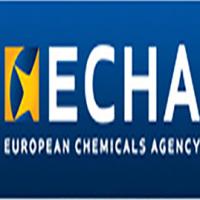Statement on C6 foam and PFOA/PFOA related substances

Perfluorooctanoic acid (PFOA) is classified as persistent, bio-accumulative and toxic (PBT) substance. PFOA is known to persist in the environment and can cause irreversible and detrimental effects on both the environment and on human health. PFOA has also been found to disperse across large areas and become a widespread problem in the environment. This makes the emissions/discharges of PFOA damaging to the wider community, and not just those that are directly exposed.
In an attempt to reduce further environmental damage by PFOA, the United States Environmental Protection Agency (EPA) founded the 2010/2015 PFOA Stewardship Programme. The programme invited eight major fluoropolymer and telomer manufacturers to join a global program which committed to a 95% reduction, by no later than 2010, in emissions of all media of PFOA, precursor chemicals that can break down in the environment to form PFOA and to also commit to the elimination of all of these chemicals from emissions and products by 2015. (It was noted that by 2010 four of the eight companies had met this target).
Under this programme, fluorosurfactant manufacturers worldwide pledged to withdraw from sale any fluorosurfactant with a carbon chain length greater than C6 by 2015. It was concluded by the EPA that carbon chain lengths greater than C6 could degrade to form PFOA and would therefore be classified as environmentally hazardous. It was also noted that fluorosurfactants with a chain length of C6 or less did not degrade to form PFOA and would therefore not be classified as environmentally hazardous.
To address these findings the Aberdeen Foam range was reformulated to utilise C6 fluorotelomer chemistry before September 2013, over a year ahead of the date set by the EPA.
On the 13th of January 2016 the European Chemical Agency (ECHA) released a definitive statement encompassing the opinion of both the committee for risk assessment (RAC) and the Committee for Socio-economic Analysis (SEAC) on PFOA salts and PFOA- related substances.
In conclusion both RAC and SEAC deduce that there should be a quantifiable value placed on the acceptable levels of PFOA. A limit of 1000 parts per billion (ppb) for PFOA-related substances when used in firefighting concentrations with the exemption of C6 chemistry when used in controlled conditions. This concentration limit and derogation are to be reviewed 5 years after enforcement.
Manufactures of fluorotelomers are to be restricted to a 25ppb limit of PFOA salts or PFOA related substances within their products in the near future. Therefore manufacturers of firefighting foam are guaranteed to be under the 1000ppb sanction.
Therefore, under the new ECHA regulations the manufacture of fluorine containing foams, namely Aqueous Film Forming Foams (AFFFs), is still achievable and most importantly is still the most effective and efficient foam on the market for the protection of lives both on and offshore.
Oil Technics has been manufacturing AFFFs using C6 chemistry since 2014 and all products have been re-registered to UL162, EN1568, ICAO and LASTFIRE where appropriate. All Oil Technics C6 foams are compatible with previous products.
As a manufacturer we now have to wait for our fluorotelomer suppliers to confirm, within in the time scale set by ECHA, that they conform to the 25ppb limit restriction.
Posted 26th April 2016

